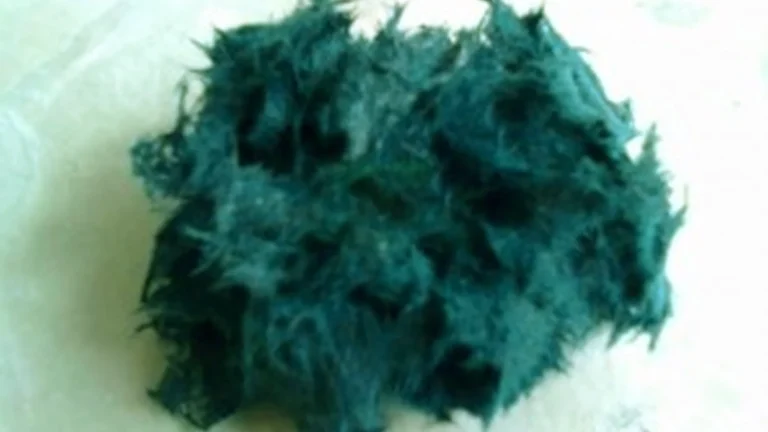Dough moulding compound (DMC) is rapidly gaining popularity in various artistic and design fields due to its versatility, ease of use, and ability to produce intricate designs. In this article, we will explore what dough moulding compound is, its applications, benefits, and techniques for working with it, providing artists and designers with valuable insights on how to harness this innovative material.
TRENDING
Exploring The Factors Behind Stupava Vyvoj Poctu Obyvatelov
What Is Dough Moulding Compound?
Dough moulding compound’s is a pliable material composed of a mixture of resin, fillers, and other additives. It is specifically designed to mimic the texture and handling characteristics of traditional clay, but with enhanced properties that make it suitable for a wider range of applications. DMC is non-toxic, lightweight, and can be molded into various shapes, making it ideal for artists, educators, and hobbyists.
Key Properties of Dough Moulding Compound
Workability: DMC can be easily shaped and molded without the need for extensive tools or techniques. This makes it accessible for both beginners and experienced artists.
Drying Time: Unlike traditional clay that requires lengthy drying periods, DMC can set quickly, allowing for faster project completion.
Durability: Once cured, dough moulding compound’s becomes hard and resilient, making it suitable for both decorative and functional pieces.
Non-Toxicity: DMC is safe for use in schools and homes, making it an excellent choice for educational projects.
Variety of Finishes: The surface of DMC can be painted, stained, or finished with various coatings, providing endless creative possibilities.
Applications Of Dough Moulding Compound
Dough moulding compound’s versatility allows it to be used in a wide array of applications. Here are some of the most popular uses:
Sculptures and Figurines
Artists often use DMC to create intricate sculptures and figurines. Its malleability allows for fine details and smooth finishes, making it an excellent choice for both realistic and abstract designs.
Home Decor
DMC is perfect for crafting decorative items such as wall hangings, ornaments, and centerpieces. Artists can create unique pieces that enhance interior spaces.
Educational Projects
Due to its ease of use and non-toxic nature, DMC is widely used in schools for educational projects. Teachers can introduce students to sculpture and design concepts without the complexity of traditional clay.
Prototyping
Designers often turn to DMC for prototyping products or creating models. Its quick curing time and detail retention make it ideal for bringing ideas to life.
Jewelry Making
Dough moulding compound’s can also be utilized in jewelry design. Artisans can create custom pendants, earrings, and other accessories, providing a unique touch to their creations.
Benefits Of Using Dough Moulding Compound
Incorporating dough moulding compound into art and design projects comes with numerous benefits:
Cost-Effective
DMC is often more affordable than other materials like polymer clay or traditional ceramics. This makes it an attractive option for artists on a budget.
Easy to Use
With no need for specialized tools, beginners can quickly learn to work with DMC, making it a popular choice for workshops and classes.
Low Maintenance
DMC does not require firing or extensive finishing techniques, making it a low-maintenance material for artists and educators.
Environmentally Friendly
Many DMC products are made from sustainable materials, making them a more environmentally conscious choice for artists.
Reusable
Unused DMC can be stored for future use, allowing artists to maximize their materials without waste.
Techniques For Working With Dough Moulding Compound
To make the most of dough moulding compound, here are some essential techniques that artists can employ:
Preparation
Before working with DMC, it is important to prepare the workspace. Ensure that the surface is clean and free of debris to prevent imperfections in the final piece.
Conditioning the Material
Dough moulding compound may require some conditioning to achieve optimal workability. Knead the material until it becomes pliable and smooth, making it easier to shape and mold.
Layering
For larger projects, consider using a layering technique. Start with a base and build up layers of DMC to create depth and dimension in the piece.
Texturing
Incorporate textures into your designs by using tools or household items. Pressing objects like fabric, leaves, or even fingers into the DMC can create interesting patterns and surfaces.
Finishing Touches
Once the piece has cured, artists can paint, seal, or finish their creations to enhance their appearance. Experiment with different paints, varnishes, or stains to achieve the desired look.
Best Practices For Storage And Care
To maintain the quality of dough moulding compound, proper storage and care are essential:
Store in Airtight Containers
Keep unused DMC in airtight containers to prevent it from drying out. Label the containers with the date of purchase for reference.
Avoid Direct Sunlight
Exposure to sunlight can cause DMC to fade or dry out. Store it in a cool, dark place to extend its shelf life.
Clean Tools Regularly
If using tools with DMC, clean them immediately after use to prevent residue from hardening and affecting future projects.
Creative Ideas Using Dough Moulding Compound
Here are some creative project ideas for artists looking to explore the potential of dough moulding compound:
Personalized Coasters
Create custom coasters by molding DMC into circular shapes and adding unique designs. Paint them with vibrant colors for a functional and decorative touch.
Holiday Ornaments
Design festive ornaments for various holidays. Use cookie cutters to shape the DMC and decorate with paints, glitters, or embellishments.
Wall Art
Craft three-dimensional wall art by layering and texturing DMC. Attach it to a canvas or directly onto walls for an eye-catching display.
Functional Items
Consider making functional items such as bowls, trays, or keychains. With proper sealing, DMC can be both beautiful and practical.
Collaborative Projects
Encourage group creativity by organizing collaborative projects with DMC. This can be a great activity for workshops or community events.
Conclusion
Dough moulding compound is a versatile and accessible material that offers endless possibilities for artists and designers. Its unique properties, ease of use, and quick curing time make it a preferred choice for various applications. By exploring different techniques and creative ideas, artists can harness the potential of DMC to produce stunning and innovative works. Whether you are a seasoned professional or a beginner, DMC can elevate your art and design projects to new heights.
ALSO READ: Macadâmia Magic: Unlock The Benefits Of This Nutty Superfood
FAQs
What is Dough Moulding Compound?
Dough moulding compound is a pliable material made from resin, fillers, and additives that resembles traditional clay but offers enhanced properties like quick drying and durability. It’s ideal for sculpting, prototyping, and educational projects.
How do I store dough moulding compound?
Store unused DMC in airtight containers to prevent drying out, and keep it in a cool, dark place away from direct sunlight for best results.
Can I paint dough moulding compound?
Yes, once the DMC has cured, it can be painted, stained, or finished with various coatings to achieve the desired look for your projects.
Is dough moulding compound safe for children?
Yes, DMC is non-toxic and safe for use in schools and homes, making it a great choice for educational and creative activities with children.
What tools do I need to work with dough moulding compound?
Basic tools like sculpting tools, rolling pins, and household items for texturing can be used. However, DMC can be easily molded by hand without the need for specialized tools.

